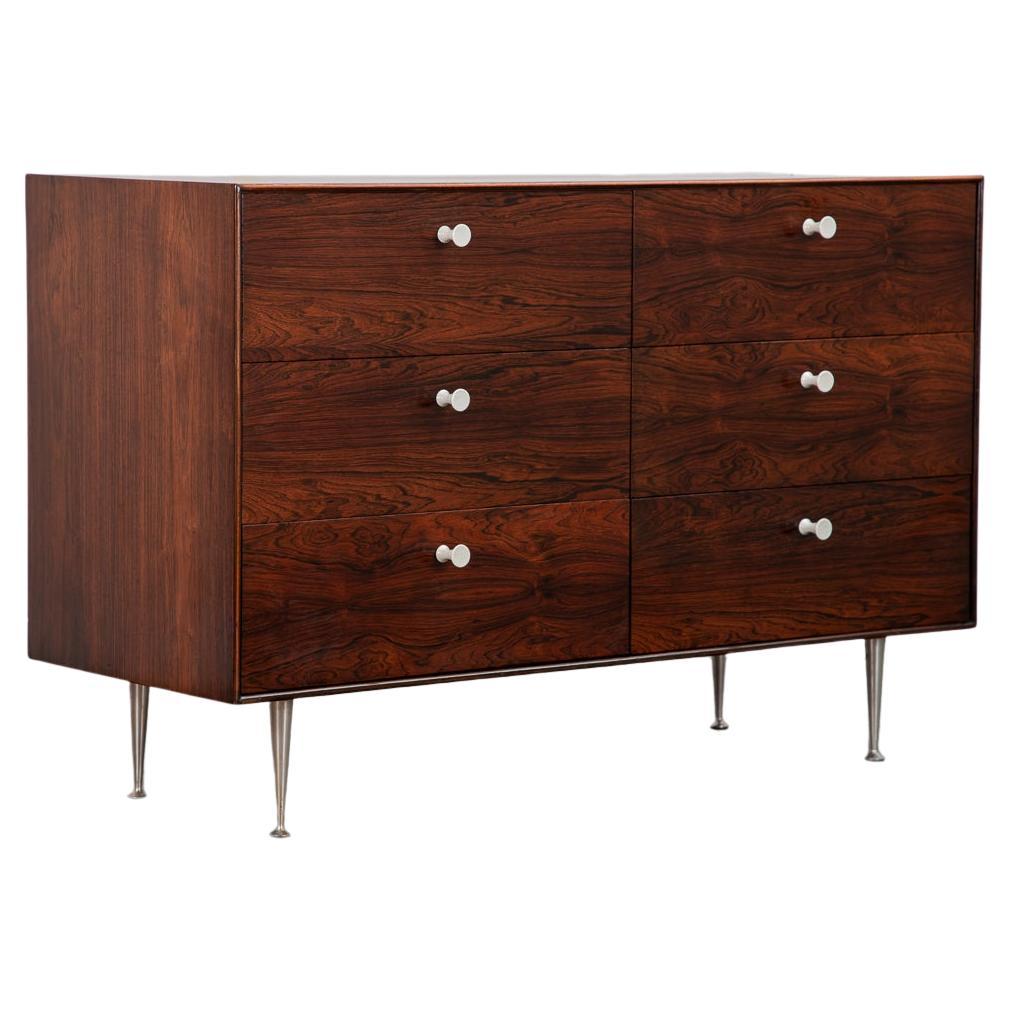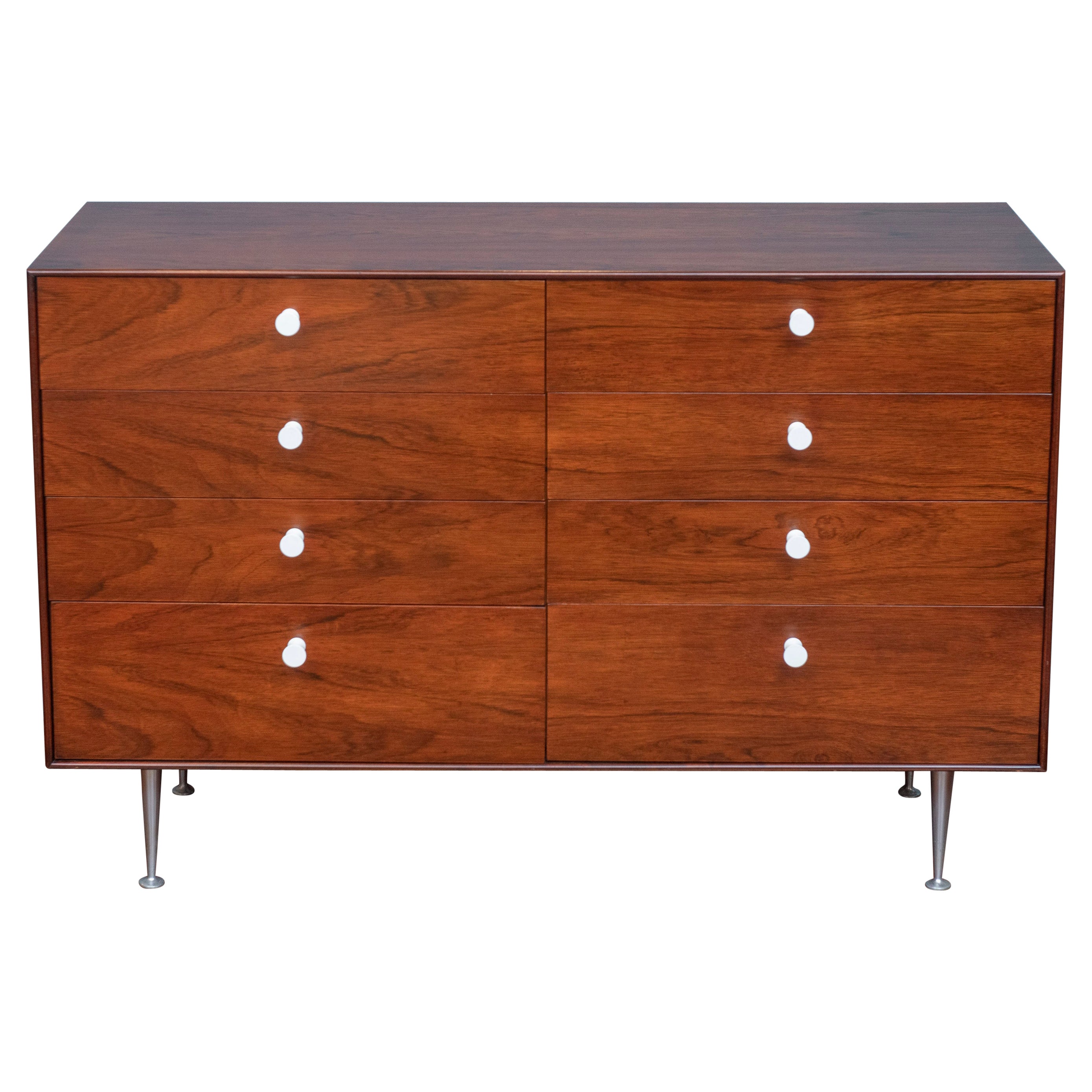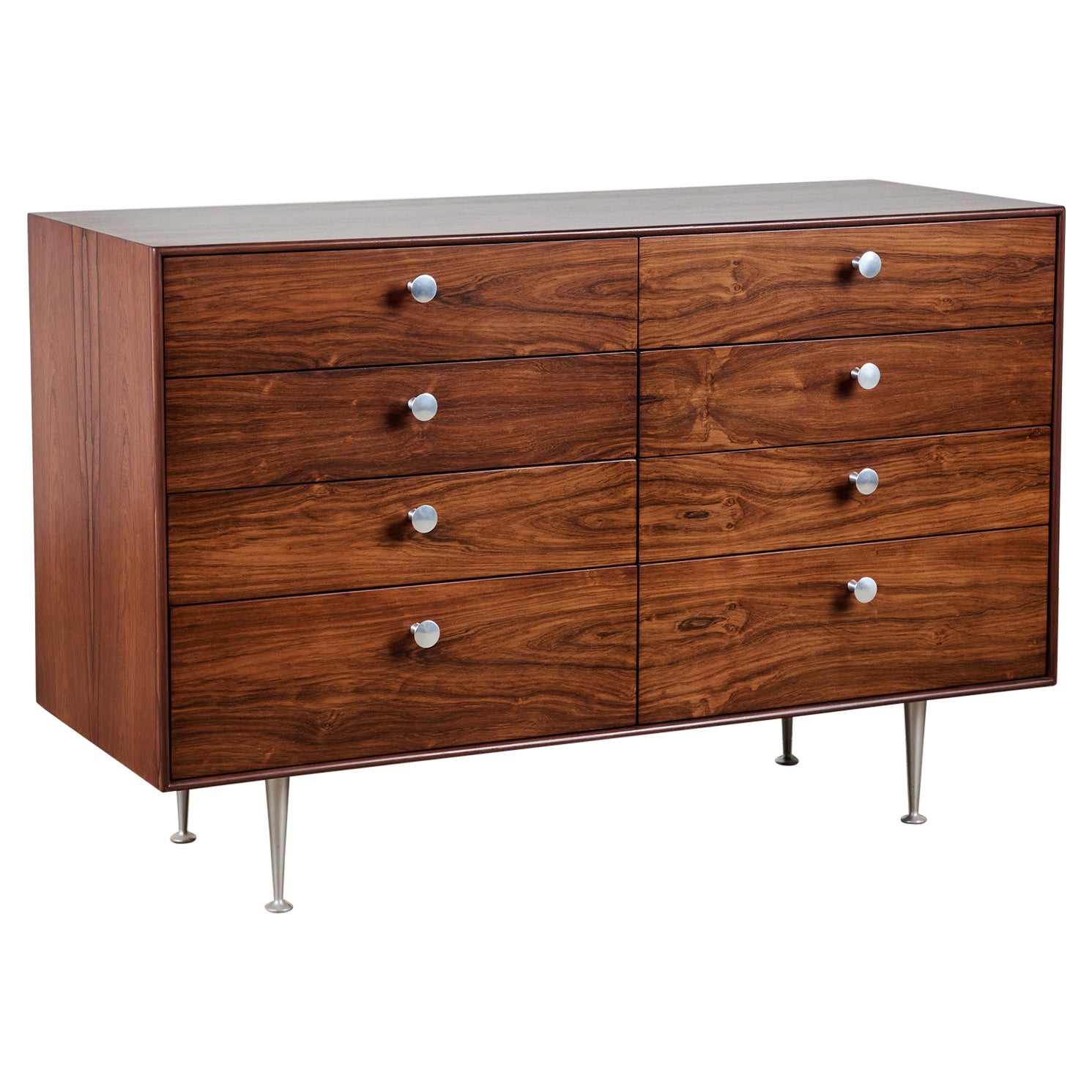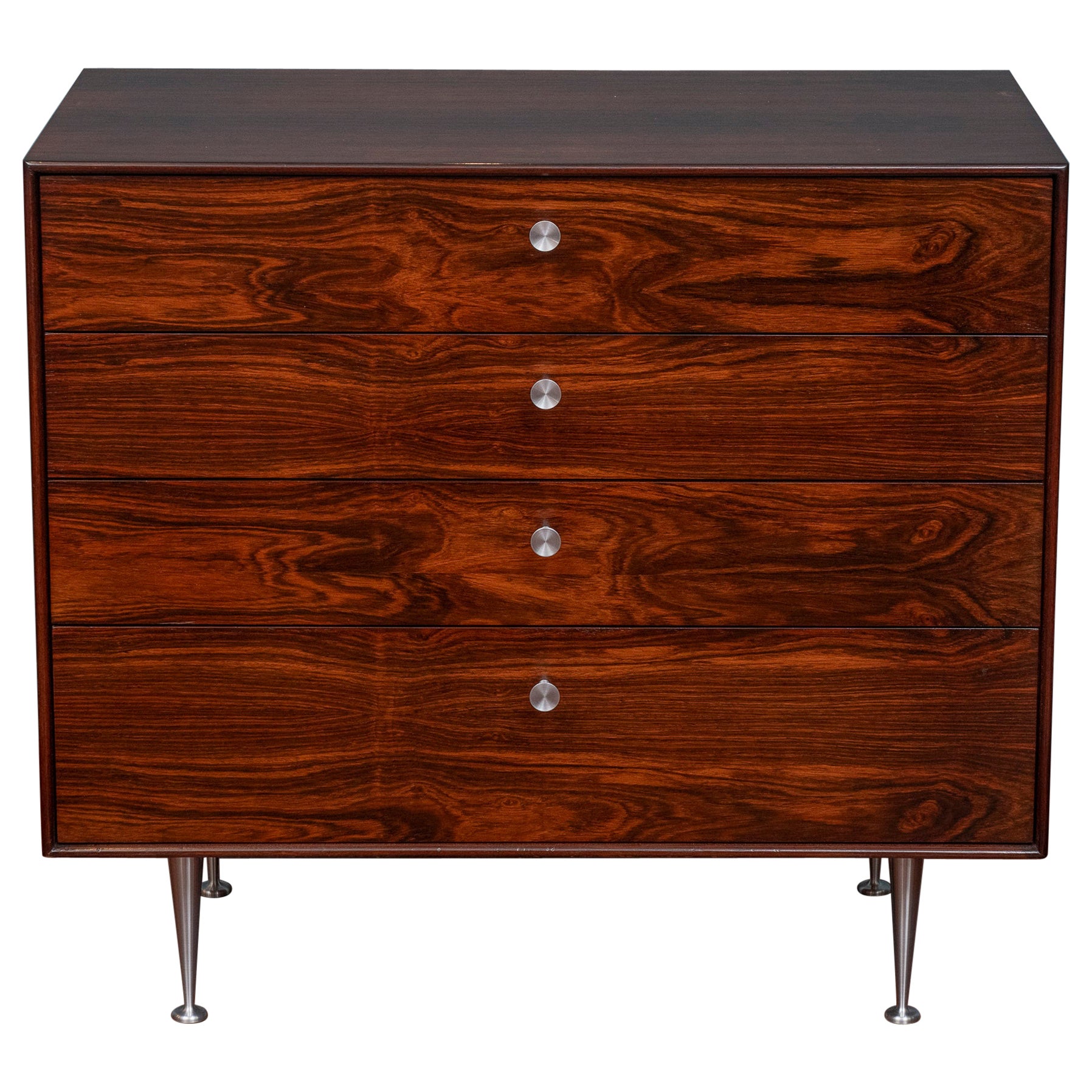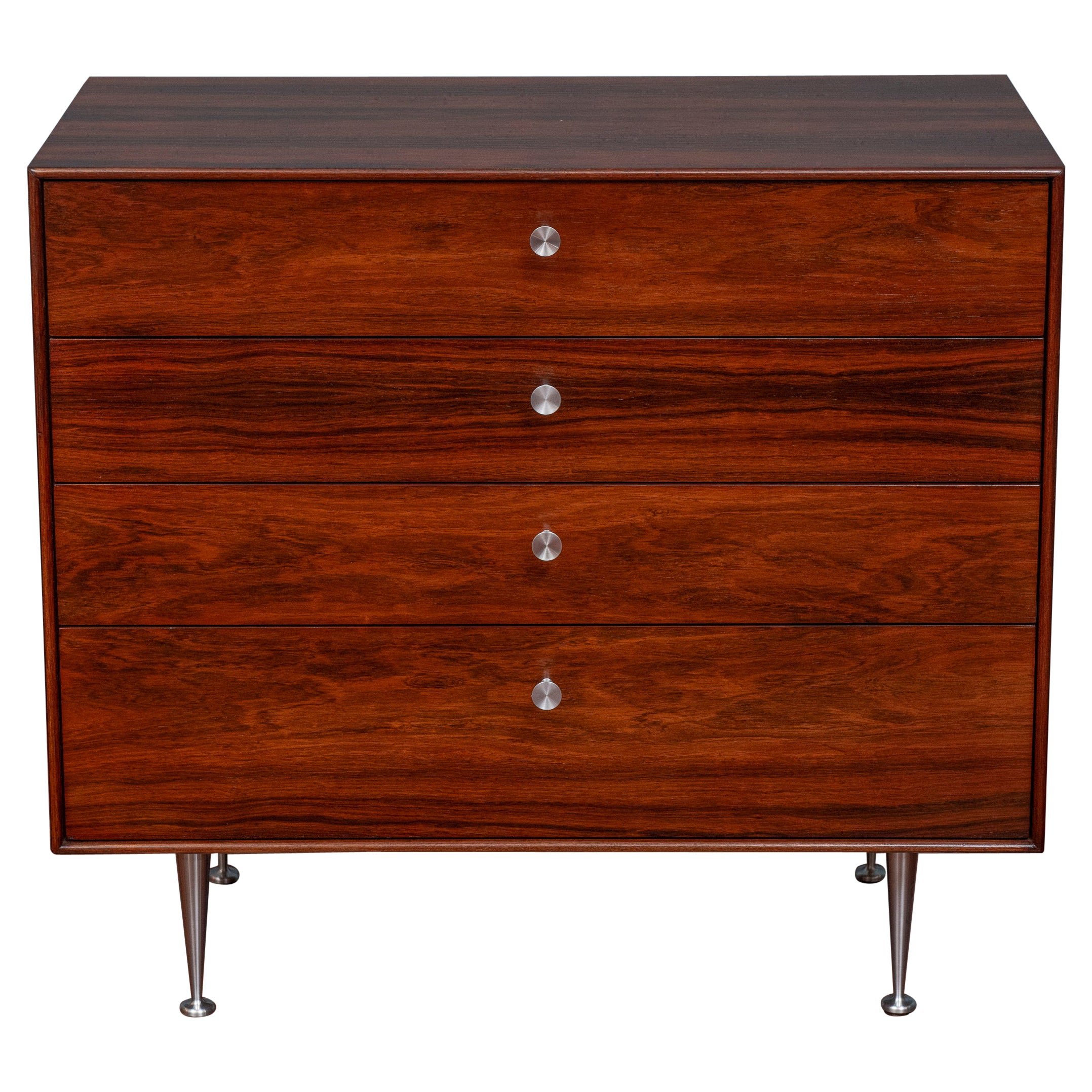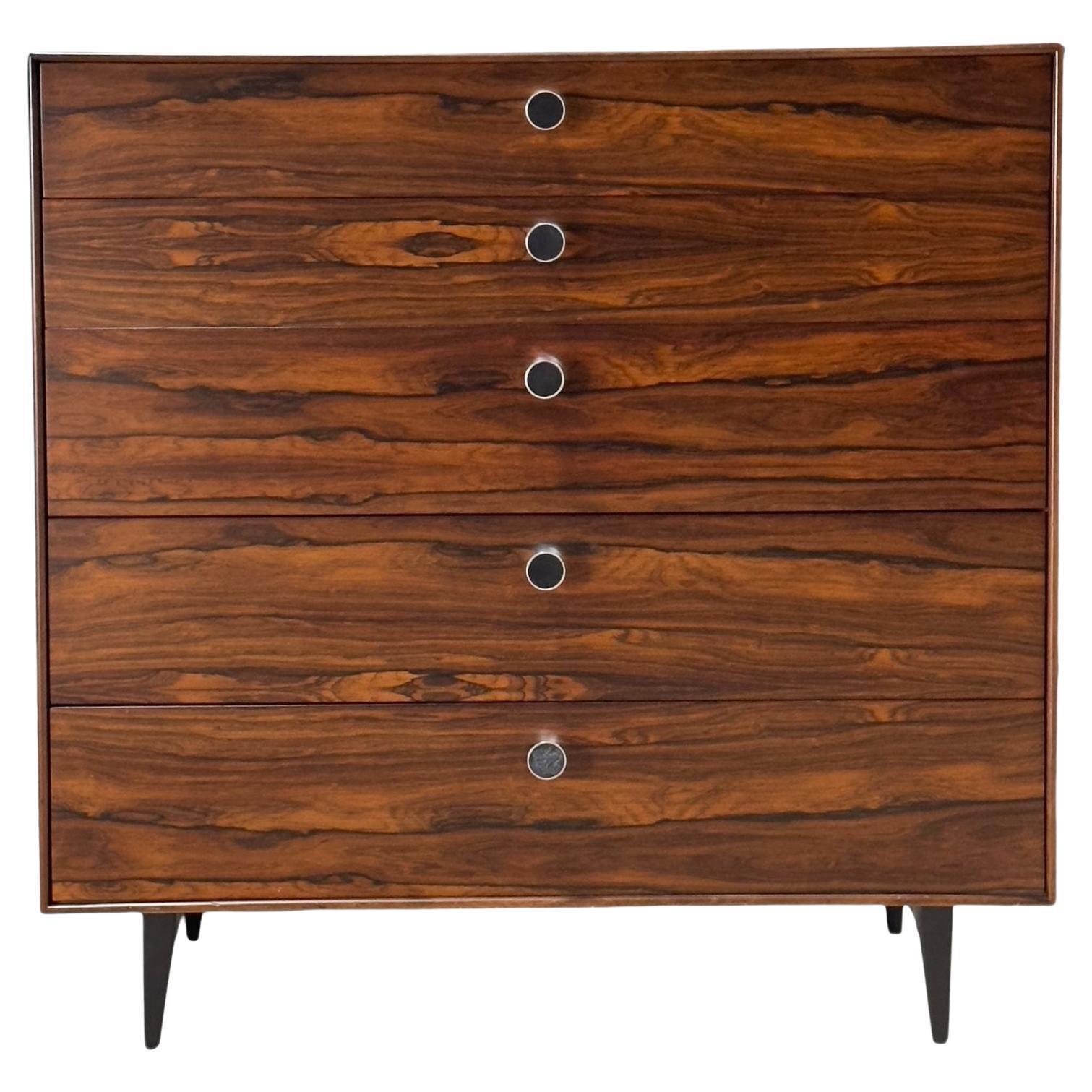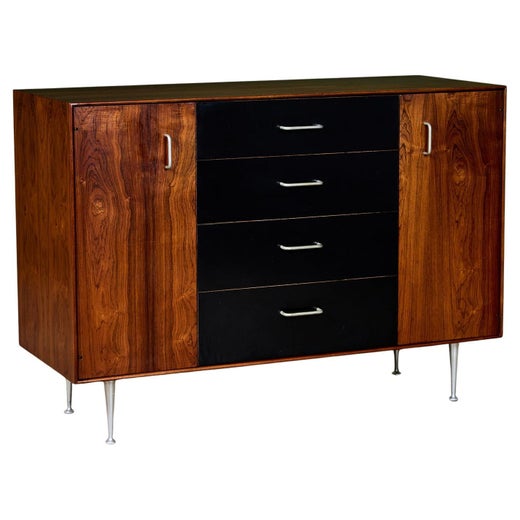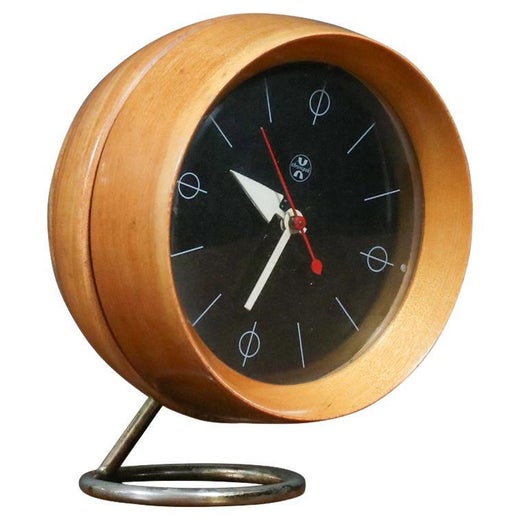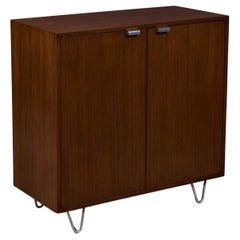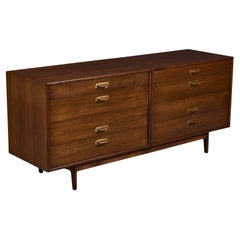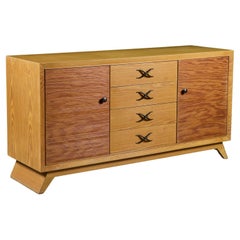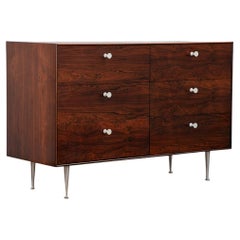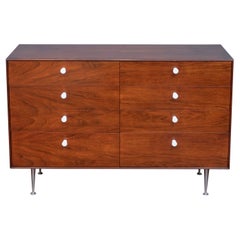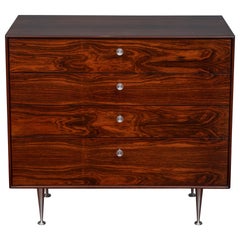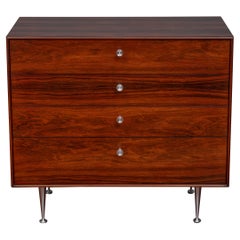George Nelson Thin Edge Rosewood Cabinet for Herman Miller
About the Item
- Creator:
- Dimensions:Height: 33.5 in (85.09 cm)Width: 47 in (119.38 cm)Depth: 18.5 in (46.99 cm)
- Style:Mid-Century Modern (Of the Period)
- Materials and Techniques:
- Place of Origin:
- Period:
- Date of Manufacture:circa 1950s
- Condition:Wear consistent with age and use. Good vintage condition. Top shows some wear.
- Seller Location:Los Angeles, CA
- Reference Number:1stDibs: LU1645243026652
Craig Ellwood
Rarely have rectangular boxes looked as elegant as in the mid-century modern homes designed by Craig Ellwood Associates of Los Angeles.
Unabashedly influenced by the work of Bauhaus visionary Ludwig Mies van der Rohe, Ellwood’s houses were long, low and strong boned, made of steel beams and expanses of glass. Dramatically sited on oceanfront properties or in eucalyptus groves, they gave the borrowed architectural formalism of European modernism a distinctly California flavor.
A local legend in his time, Ellwood is not as well known today as Richard Neutra, Charles and Ray Eames, Albert Frey or any number of postwar architects working in Southern California, although his office designed more than 100 buildings from the late 1940s through the mid-1970s. Several were Case Study Houses, part of an experimental building program sponsored by Arts + Architecture magazine that was intended to encourage the use of industrial materials and techniques for residential construction — a commonplace now but revolutionary then.
Born in Texas, Johnnie Burke (Ellwood’s given name) was a World War II army vet, a student of engineering at UCLA and a male model when he took a night class in construction cost estimating.
“The next thing he knows, he’s working on the Eames Case Study House and John Entenza’s house next door,” says Michael Boyd, referring to the editor and publisher of the influential Arts & Architecture magazine, who became a champion of Ellwood’s work. “That’s where he learned the grammar of form.”
Boyd, a designer and preeminent modernism-preservation specialist, edited Making L.A. Modern: Craig Ellwood (Rizzoli, 2018), which aimed to give Ellwood’s impressive body of work its due.
Burke soon reinvented himself as Craig Ellwood. Accolades rolled in for the designer even as he never earned a license to practice architecture. The fact that a self-taught practitioner was responsible for so many important postwar buildings didn’t sit well with the architectural establishment.
By the late 1960s, things had changed for Ellwood. Unable to get commissions and tossed out of his own firm by disgruntled partners who felt cheated of proper credit, he retired to a farmhouse in Tuscany, and, for the next two decades, turned out abstract geometric paintings in a vivid Op Art mode.
Find vintage Craig Ellwood furniture on 1stDibs.
George Nelson
Architect, designer, and writer George Nelson was a central figure in the mid-century American modernist design movement; and his thoughts influenced not only the furniture we live with, but also how we live.
Nelson came to design via journalism and literature. Upon receiving his bachelor’s degree in architecture from Yale in 1931, he won the Prix de Rome fellowship, and spent his time in Europe writing magazine articles that helped bring stateside recognition to Ludwig Mies van der Rohe, Gio Ponti, Le Corbusier and other canonical modernist architects.
In the 1940s, Nelson wrote texts that suggested such now-commonplace ideas as open-plan houses, storage walls and family rooms. D.J. De Pree, the owner of the furniture maker Herman Miller, was so impressed by Nelson that in 1944 — following the sudden death of Gilbert Rohde, who had introduced the firm to modern design in the 1930s — he invited Nelson to join the company as its design director. There Nelson’s curatorial design talents came to the fore.
To Herman Miller he brought such eminent creators as Charles and Ray Eames, Isamu Noguchi, and the textile and furniture designer Alexander Girard. Thanks to a clever contract, at the same time as he directed Herman Miller he formed a New York design company, George Nelson & Associates, that sold furniture designs to the Michigan firm. Nelson's studio also sold designs for clocks to the Howard Miller Clock Company, a manufacturer that was initially part of Herman Miller before it became an offshoot that was helmed by Howard Miller, D.J. De Pree's brother-in-law.
Nelson’s New York team of designers (who were rarely individually credited) would create such iconic pieces as the Marshmallow sofa, the Coconut chair, the Ball clock, the Bubble lamp series and the many cabinets and beds that comprise the sleek Thin-Edge line.
For dedicated collectors, as well as for interior designers who look beyond “the look,” there is a “cool factor” inherent to vintage pieces from George Nelson and others. Nelson was in on it from the start, and it’s valuable to have a piece that was there with him.
But still, as is evident from the offerings from dealers on 1stDibs, in any of the designs, in any iteration whose manufacture Nelson oversaw and encouraged, there are shining elements of lightness, elegance, sophistication — and a little bit of swagger. George Nelson felt confident in his ideas about design and didn’t mind letting the world know.
- ShippingRetrieving quote...Shipping from: Los Angeles, CA
- Return Policy
More From This Seller
View AllMid-20th Century American Mid-Century Modern Dressers
Aluminum
Vintage 1950s American Mid-Century Modern Cabinets
Aluminum, Steel
Vintage 1960s American Mid-Century Modern Dressers
Walnut
Vintage 1950s American Mid-Century Modern Buffets
Brass
Vintage 1960s American Mid-Century Modern Credenzas
Walnut
Vintage 1960s Danish Mid-Century Modern Credenzas
Rosewood
You May Also Like
Mid-20th Century American Mid-Century Modern Dressers
Rosewood
Vintage 1960s American Mid-Century Modern Dressers
Aluminum
Vintage 1950s American Mid-Century Modern Dressers
Aluminum
Vintage 1950s American Mid-Century Modern Dressers
Aluminum
Vintage 1950s American Mid-Century Modern Dressers
Rosewood
Mid-20th Century American Mid-Century Modern Dressers
Rosewood
